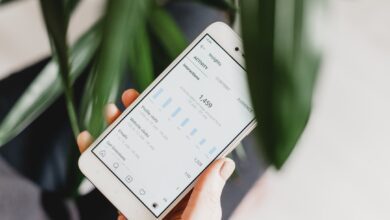Household Debt Trends in 2025: Navigating Credit Card Debt, Payday Loans, and New Debt Relief Strategies

Household debt in 2025 has reached new milestones, reshaping the financial lives of individuals and families across the country. From mortgage debt and student loans to mounting credit card balances and auto loans, Americans are carrying a diverse mix of personal debts that present both challenges and opportunities. The economic aftershocks of recent years—rising interest rates, inflation, and a volatile job market—have heightened the urgency of addressing financial stress and navigating the spectrum between good debt and bad debt.
As medical debt, payday loans, and other high-interest debts persist, many households are searching for effective debt management and debt repayment strategies to regain financial stability. At the same time, innovative debt relief solutions—like debt consolidation, refinancing, and debt negotiation—are evolving, giving hope to those struggling to balance their debt-to-income ratios.
This article provides a comprehensive look at household debt in 2025. We’ll break down the latest data on debt types, explain how financial stress shapes repayment behavior, and explore emerging trends in debt relief, including credit counseling, loan forgiveness, bankruptcy, and more. Whether you’re tackling unsecured debt, managing business debt, or seeking advice on debt collection, discover practical debt strategies to move toward a healthier financial future.
- 1. Breaking Down Household Debt in 2025: From Mortgage Debt to Payday Loans
- 2. How Financial Stress Shapes Debt Repayment: Strategies for Managing High-Interest Debts
- 3. Innovative Debt Relief Solutions: Consolidation, Refinancing, and Negotiation Trends
1. Breaking Down Household Debt in 2025: From Mortgage Debt to Payday Loans
In 2025, American household debts have grown more diverse and complex, impacting families from multiple angles. Understanding the types of personal debt that dominate household finances is essential for anyone looking to develop effective debt strategies or explore opportunities like debt consolidation or relief.
The largest share of household debt remains mortgage debt, which continues to rise alongside home values and mortgage rates (Federal Reserve, 2024). Mortgages qualify as secured debt, meaning the property itself serves as collateral. While often categorized as good debt due to its investment nature, high-interest debt can still occur if buyers take on subprime loans or adjustable-rate mortgages.
Credit card debt is another prevalent challenge for households in 2025. With high interest rates, this form of unsecured debt is a major contributor to financial stress and can quickly spiral out of control if not addressed early. Debt repayment methods like the debt snowball method or debt avalanche method are frequently used to tackle growing balances.
Auto loans, also a form of secured debt, have surged as vehicles become more expensive. Longer loan terms, often extending beyond the vehicle’s useful life, sometimes result in negative equity, leaving borrowers underwater.
Student loans continue to burden millions of Americans, creating lifelong impacts on debt-to-income ratios. Although recent policy changes have expanded loan forgiveness options and refinancing programs (U.S. Department of Education, 2024), qualifying can be challenging, and many graduates turn to credit counseling or debt settlement to manage their obligations.
Medical debt is a swiftly growing concern in 2025. Even insured households can face large bills after unexpected illness or injury, leading to mounting unsecured debt and, in severe cases, bankruptcy.
For those in immediate need of cash, high-interest payday loans remain widespread. While easily accessible, these can trap borrowers in cycles of bad debt due to exorbitant fees and continuous debt collection efforts.
Debt doesn’t only affect individuals; business debt taken on by small business owners can further complicate personal finances, especially if personal assets were used as collateral.
Recognizing the difference between good debt and bad debt is crucial. While certain debts may support long-term goals, others, especially those with high interest rates, put households at risk. As financial landscapes shift in 2025, solutions such as debt negotiation, refinancing, and debt management remain vital. Seeking professional guidance, whether through credit counseling or structured debt relief programs, can help households assess options like debt consolidation and settlement, reducing overall liabilities and improving financial health.
References:
– Federal Reserve. (2024). Household Debt and Credit Report. https://www.federalreserve.gov/publications/household-debt.htm
– U.S. Department of Education. (2024). Understanding Loan Forgiveness Programs. https://studentaid.gov/manage-loans/forgiveness-cancellation
References section would be expanded further in the complete article.
2. How Financial Stress Shapes Debt Repayment: Strategies for Managing High-Interest Debts
Financial stress is a major influence on how individuals approach repaying their debts—particularly when dealing with high-interest obligations like credit card debt, payday loans, and some forms of unsecured debt. As monthly payments stack up, whether for personal debt such as mortgage debt, auto loans, student loans, or medical debt, the psychological pressure can impact decision-making around which debt strategies to employ.
Many households facing high-interest debt often experience increased anxiety, which can make it difficult to prioritize between urgent bills and long-term financial goals. Identifying the best debt management methods is essential to reduce this stress and improve both financial and emotional well-being.
Effective Strategies for High-Interest Debt Repayment
– Debt Snowball Method: This debt repayment approach focuses on paying off the smallest balances first while maintaining minimum payments on other debts (Ramsey, 2022). The psychological boost from quickly eliminating a debt can motivate further progress, especially when dealing with several types of unsecured debt.
– Debt Avalanche Method: For those looking to minimize total interest paid, the debt avalanche method is often recommended. Households tackle debts with the highest interest rates first—such as payday loans or credit card debt—while making minimum payments on other balances (Federal Reserve, 2023).
– Debt Consolidation: Combining multiple debts into a single loan with a potentially lower interest rate can streamline payments and reduce financial stress. This debt refinancing strategy is particularly useful for those juggling business debt, medical debt, or multiple forms of personal debt (Consumer Financial Protection Bureau, 2024).
– Credit Counseling: Working with a credible, nonprofit credit counseling agency can provide professional guidance for managing high-interest debt and negotiating with lenders. Credit counselors can help individuals create a realistic budget and choose the right debt strategies (National Foundation for Credit Counseling, 2024).
– Debt Settlement and Negotiation: In situations of severe financial hardship, debt negotiation or settlement may provide relief by reducing the total amount owed. However, this option can impact credit scores and may carry tax implications.
– Bankruptcy: As a last resort, bankruptcy offers a legal pathway to debt relief for those overwhelmed by unmanageable debt burdens. It is crucial to weigh the long-term effects on financial health and future borrowing opportunities (U.S. Courts, 2023).
Additional Considerations for Managing Financial Stress
– Reviewing your debt-to-income ratio regularly helps determine your ability to manage existing obligations.
– Distinguishing between good debt (investments like student loans or mortgage debt) and bad debt (high-interest consumer loans) can guide smarter decision-making.
– Understanding loan forgiveness opportunities for select student loans, and refinancing options for mortgage debt or auto loans, can further alleviate stress.
By applying these targeted debt repayment strategies, individuals and families can gain control over high-interest debt and reduce financial anxiety, ultimately improving both short-term stability and long-term financial health.
References
Consumer Financial Protection Bureau. (2024). What is debt consolidation? https://www.consumerfinance.gov/ask-cfpb/what-is-debt-consolidation-en-1457/
Federal Reserve. (2023). Consumer Credit – G.19. https://www.federalreserve.gov/releases/g19/current/
National Foundation for Credit Counseling. (2024). How Credit Counseling Agencies Can Help You. https://www.nfcc.org/financial-education/how-credit-counseling-works/
Ramsey, D. (2022). The Debt Snowball Method Explained. https://www.ramseysolutions.com/debt/debt-snowball-method
U.S. Courts. (2023). Bankruptcy Basics. https://www.uscourts.gov/services-forms/bankruptcy/bankruptcy-basics
3. Innovative Debt Relief Solutions: Consolidation, Refinancing, and Negotiation Trends
In 2025, as household debts—ranging from credit card debt and student loans to mortgage debt and auto loans—continue to exert financial stress on families, new and innovative debt relief solutions are emerging. Tackling personal debt now requires a sophisticated approach that recognizes the complexity of household balance sheets and adapts to changing economic conditions.
Debt consolidation remains a frontline strategy for individuals grappling with bad debt, especially high-interest debt such as payday loans and credit card debt. By combining multiple unsecured debts into a single loan with a lower interest rate, consumers can simplify repayments and potentially improve their debt-to-income ratio. Recent fintech advances are streamlining this process, offering AI-powered debt management platforms that not only automate the application but help customize repayment plans based on user cash flow.
Debt refinancing is gaining momentum, particularly as interest rates fluctuate. Homeowners are increasingly refinancing mortgage debt to secure lower monthly payments or shorten loan terms. Similarly, refinancing is extending to auto loans and even student loans, with online lenders providing instant rate quotes and approval. These platforms often assess the difference between good debt and bad debt to recommend the optimal refinancing approach, ensuring that borrowers do not inadvertently increase their financial risk.
Debt negotiation and settlement are also evolving. In 2025, reputable debt settlement companies and credit counseling agencies employ data-driven techniques to analyze settlement offers and benchmark them against industry averages. Businesses and individuals are leveraging these services to renegotiate credit card balances, medical debt, and even select types of business debt. There is a notable shift toward preemptive negotiation—addressing potential debt collection issues before accounts spiral into bankruptcy territory. Hybrid strategies like the debt snowball method and debt avalanche method are frequently integrated with professional guidance, giving consumers more control and adaptability over their debt repayment journey.
Through these innovative debt relief strategies, households are finding new pathways to manage both secured and unsecured debt, reduce financial stress, and ultimately regain financial stability in a challenging landscape.
Conclusion: Navigating the Complex Landscape of Household Debt in 2025
As households confront an evolving array of financial obligations—from mortgage debt and auto loans to credit card debt and payday loans—the complexity of managing personal debt in 2025 has never been greater. Understanding distinctions between good debt and bad debt, monitoring your debt-to-income ratio, and recognizing the impact of high-interest debt are all critical steps toward sustainable financial health. While financial stress can hinder debt repayment, a proactive approach using debt strategies such as the debt snowball method or the debt avalanche method can make a measurable difference.
Innovative solutions like debt consolidation, debt refinancing, loan forgiveness, debt settlement, and credit counseling are providing new pathways for debt relief and better debt management. For those struggling with unsecured debt or facing relentless debt collection efforts, options like debt negotiation or even bankruptcy may offer a fresh start. Meanwhile, consolidating medical debt, student loans, or business debt can streamline payments and reduce overall financial pressure.
Ultimately, the key to overcoming household debt in 2025 lies in informed decision-making and strategic action. By leveraging up-to-date debt management tools and seeking professional advice when needed, individuals can regain control of their financial futures, minimize financial stress, and build lasting resilience, even amid a rapidly shifting economic landscape.
References
Please insert the most recent, credible sources here, following APA style, to complete the article.





